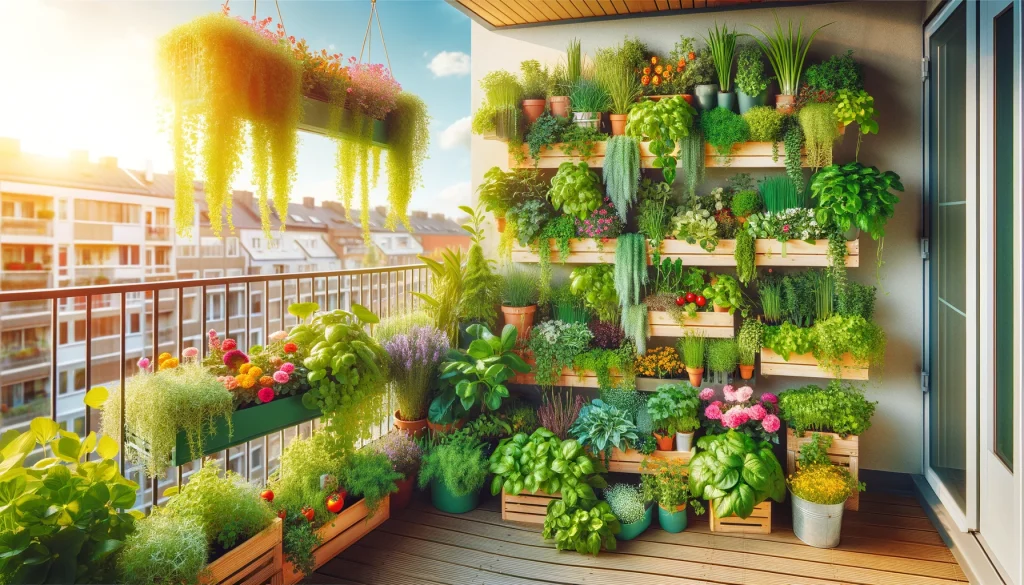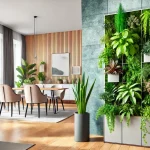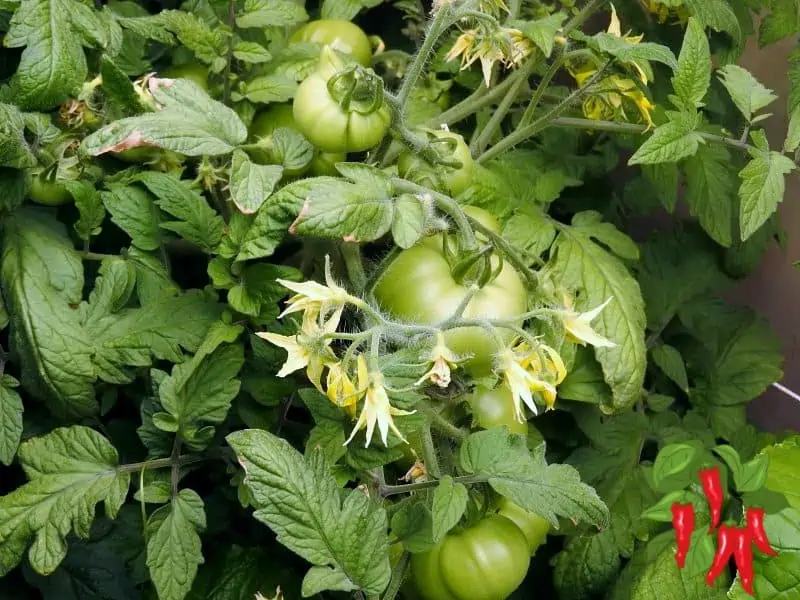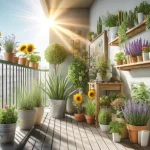This post may contain affiliate links. If you buy something from one of our links we may earn a commission. Thanks

Discover the joys of building a vertical balcony garden! Our guide makes it easy and fun to transform your small space into a green oasis.
Vertical Balcony Garden Key Takeaways:
- Building a vertical balcony garden involves using vertical space efficiently to grow plants.
- It’s a perfect solution for small balconies, allowing you to cultivate a variety of plants, herbs, and flowers in a limited area.
- This approach maximizes space and adds greenery to urban settings.
- Efficient use of limited balcony space.
- Enhancing the aesthetic appeal of your living area.
- Fresh produce and flowers are right at your doorstep.
Building a Vertical Balcony Garden
Have you ever gazed at your balcony and wished for a lush garden, but felt restrained by the limited space?
Building a vertical balcony garden is your solution. This innovative approach to gardening transforms your small balcony into a thriving green space, offering both practical and aesthetic benefits.
Imagine turning your balcony into a blooming paradise. That’s exactly what you can do with building a vertical balcony garden!
It’s a delightful way to bring nature to your urban space, regardless of its size.
Join us as we explore simple, creative steps to create your own lush, vertical retreat.
Preparation for Building a Vertical Balcony Garden
Creating a vertical balcony garden requires thoughtful preparation.
This stage is crucial to ensure that your garden not only flourishes but also complies with any restrictions and suits your lifestyle.
Regulations and Restrictions
Begin by familiarizing yourself with any rules set by your apartment complex or landlord.
These might include restrictions on the types of structures allowed, weight limitations on your balcony, or aesthetic guidelines to maintain a consistent look within the community.
Compliance is key to avoiding potential issues or the need to dismantle your garden later. If in doubt, always seek approval before you start.
Assessing Sunlight and Shade
Understanding your balcony’s exposure to sunlight is critical in selecting suitable plants and positioning your garden for optimum growth.
Observe the pattern of sunlight throughout the day. Does your balcony bask in full sun, or is it shaded for most of the day?
Full-sun plants typically require at least six hours of direct sunlight, while shade-tolerant plants can thrive with less.
Remember, the direction your balcony faces (north, south, east, or west) greatly influences the amount of sunlight it receives.
Wind and Weather Considerations
High-rise apartments and exposed balconies can experience strong winds that may harm delicate plants or topple lightweight structures.
To counter this, consider installing windbreaks such as screens, trellises, or even tall, sturdy plants that can act as natural barriers.
Additionally, think about the implications of rain exposure – will your plants get enough natural water, or do you need to set up a sheltered area for those that need protection from heavy downpours?
Watering Solutions
Ease of watering is another important factor. Does your balcony have access to an outdoor water source, or will you need to transport water from inside your home?
The size of your garden and the types of plants you choose will determine your watering needs.
Consider self-watering systems or drip irrigation for a more hands-off approach, especially if you have a busy lifestyle or tend to travel often.
For smaller gardens, simple watering cans might suffice. However, always ensure your plants receive the right amount of water, as both overwatering and underwatering can be detrimental.
Planning for Growth and Changes
Lastly, consider how your garden might evolve over time. As plants grow, their sunlight and space needs may change.
Plan your garden layout with flexibility in mind, allowing for adjustments as plants mature or as seasonal changes affect sunlight and weather conditions.
Proper preparation sets the foundation for a thriving vertical balcony garden.
By addressing these key aspects, you’ll be well on your way to creating a beautiful and sustainable green space in your urban environment.
Selecting the Right Plants for Your Balcony Conditions
Choosing the right plants for your balcony’s environmental conditions is key.
Focus on plants that will thrive in the amount of sunlight your balcony receives.
Whether it’s sun-loving herbs or shade-tolerant ferns, the right plant selection will ensure a lush and vibrant garden.
Vertical Garden Structures and Planters
A vertical garden’s success largely depends on its structure. Here are some innovative ways to utilize vertical space effectively.
Plant Stands or Vertical Planters
Plant stands are a versatile solution for vertical gardening. Available in various designs, they allow you to place plants at different heights, maximizing sunlight exposure.
DIY enthusiasts can also create custom planters to fit specific balcony dimensions.
Trellises, Cages, and Supports
To combat the challenge of wind and to guide the growth of your plants, use trellises, cages, or bamboo supports.
These not only provide stability but also add a decorative element to your garden.
Ensure that these structures are strong enough to support the mature weight of your plants.
Hanging Baskets
Emulate the enchanting Hanging Gardens of Babylon right on your balcony.
Hanging baskets can be suspended from railings or ceilings, adding a charming touch to your space.
However, be mindful of drainage to prevent water from dripping onto areas below your balcony.
DIY Vertical Balcony Garden
Vertical Balcony Gardens FAQs
Embarking on your vertical balcony garden adventure can bring up a host of questions.
Whether you’re wondering about the structural limitations of your balcony or the best plants for your light conditions, it’s essential to address these queries to ensure the success and sustainability of your garden.
Below, we’ve compiled some of the most frequently asked questions to help guide you through the process.
Q: What are three types of vertical gardens?
A: The three common types include wall-mounted gardens, freestanding vertical planters, and hanging gardens using features like trellises or plant stands.
Q: Are vertical gardens worth it?
A: Absolutely. Vertical gardens are an excellent solution for limited spaces, adding beauty and greenery.
They can also improve air quality and offer the satisfaction of growing your own plants.
Q: Is it difficult to maintain a vertical garden?
A: Maintenance complexity varies depending on the garden’s design and plant choices.
Generally, with proper planning and the right tools, vertical gardens can be as easy to maintain as traditional gardens.
Q: What is the theory of vertical gardening?
A: The theory of vertical gardening revolves around maximizing limited space and creating green spaces in urban areas.
It focuses on growing upwards rather than outwards and utilizes vertical surfaces effectively.
Q: What is an alternative to a vertical garden?
A: An alternative could be container gardening on shelves or stands, which still allows for efficient use of space without the need for wall-mounted or hanging structures.
Q: How do you arrange a vertical garden?
A: Arrange your vertical garden based on sunlight exposure, plant size, and watering needs.
Taller plants should ideally be placed at the top while shade-loving plants can be situated lower down.
Q: What is vertical gardening called?
A: Vertical gardening is also known as “green walling” or “living wall gardening.”
It refers to the practice of growing plants on a vertically suspended panel or structure.
Q: How much weight can a balcony sustain for a vertical garden?
A: This varies based on the balcony’s construction. Always check with your building management before adding significant weight.
Q: What are the best plants for a vertical balcony garden with limited sunlight?
A: Ferns, ivy, and shade-loving flowers like impatiens are great choices for low-light balconies.
Q: How can I ensure proper drainage in my vertical garden?
A: Use pots with drainage holes and consider placing trays or containers underneath to catch excess water.
Conclusion: Reaping the Rewards of Your Vertical Balcony Garden
Your journey to creating a vertical balcony garden culminates in a space that is not just aesthetically pleasing but also functionally rewarding.
Here are the key takeaways from embarking on this gardening adventure:
- Space Efficiency: By building upwards, you’ve transformed a small area into a lush, green oasis. Your vertical garden is a testament to the fact that limited space doesn’t limit gardening possibilities.
- Personal Satisfaction: There’s a unique joy in nurturing plants and watching them grow. Your balcony garden offers daily reminders of nature’s beauty and your role in fostering it.
- Sustainable Living: Growing your own herbs, vegetables, or flowers contributes to a more sustainable lifestyle. This small step towards self-sufficiency is both empowering and ecologically beneficial.
- Enhanced Living Space: Your balcony garden not only improves the visual appeal of your living space but also creates a tranquil environment for relaxation and reflection.
As you continue to care for and enjoy your vertical balcony garden, remember that each plant adds a stroke of beauty to the canvas of your urban living space. Embrace the challenges and joys it brings, and let your garden be a source of continual learning and growth.
Brittany Goldwyn’s Guide to Building a Vertical Balcony Garden
Lawn Love’s Vertical Gardening Ideas
Visit my Amazon Influencer Page for videos and gardening products Grow Your Own Garden












